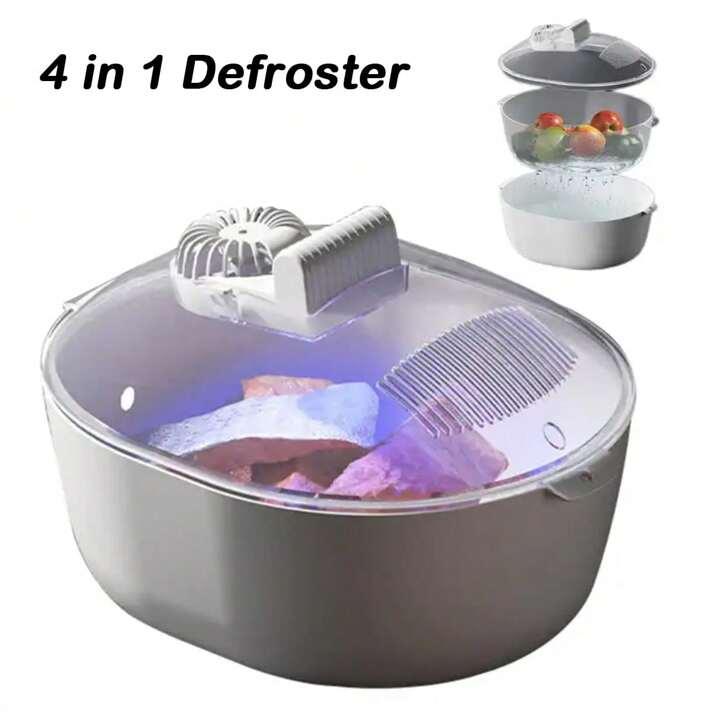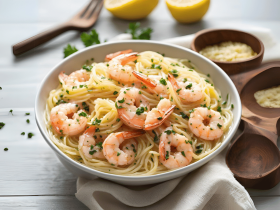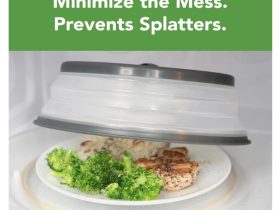Nordic Ware microwave bacon tray & food defroster products, like the Nordic Ware microwaveable slanted bacon tray food defroster or the Nordic Ware microwaveable slanted bacon tray/food defroster, offer practical solutions for those who often forget to take their meat or other frozen goods out of the freezer ahead of time. A microwave defrost tray works by drawing cold away from the food, allowing it to thaw at an accelerated rate compared to leaving it on the countertop
This not only saves time but also reduces the risk of bacterial growth that can occur at room temperature. Constructed from materials that conduct heat, such as aluminum, these trays are engineered to fit inside most microwave ovens. They’re easy to clean, usually dishwasher safe, and a boon for meal prep efficiency. By using a defrost tray, you ensure your food is ready to cook when you are, streamlining the process of getting meals to the table.
What Is A Microwave Defrost Tray?
A Microwave Defrost Tray helps thaw frozen food quickly and safely. It’s a kitchen tool many people use. Unlike microwaving, it doesn’t cook your food while defrosting. This means your food stays fresh and ready to cook.
How Does It Work?
Microwave Defrost Trays are made from metal that pulls cold from frozen food. Imagine a sponge that soaks up water. These trays do something similar with cold. This process is fast and keeps your food safe to eat.
- Quick and Efficient: Thaws food faster than leaving it out.
- Keeps Food Safe: Reduces the risk of bacteria growth.
- Easy to Use: Just place frozen food on the tray.
- Easy to Clean: Wash with soap and water or in the dishwasher.
Selecting the best tray depends on your needs. Consider size, material, and features like non-stick surfaces. A larger family might need a bigger tray. Someone who cooks a lot might want one that’s extra durable.
Maintenance Tips
Keeping your tray in good condition is simple. Wash it after each use. Dry it well to prevent rust. Don’t use metal utensils that can scratch. With proper care, your tray will last a long time.

How It Works
Have you ever wondered about quick thawing of frozen food? A microwave defrost tray can do that. It turns a time-consuming chore into a fast, easy task. This tray uses no chemicals or electricity. It’s a simple kitchen tool that makes life easier. Let’s explore how it does its magic.
Material Science
The secret behind microwave defrost trays lies in the materials used. These trays are typically made from metals like aluminum. Aluminum is a great conductor of heat. This means it can quickly absorb warmth from the surrounding environment. The metal then transfers this warmth to the frozen food placed on it. The science is similar to how a spoon heats up in a hot cup of tea. Some key points include:
- Aluminum’s thermal conductivity: Allows rapid heat transfer.
- Food-safe materials: Ensures it’s safe to use with food.
- Non-stick surfaces: Makes cleaning the tray easier.
Heat Distribution
A defrost tray’s effectiveness is also due to its heat distribution. The design of the tray ensures that heat spreads evenly across its surface. This means no part of the frozen food gets too much or too little heat. The goal is to thaw food safely and quickly. It does this by offering plenty of surface space in contact with your food. It works like the sun warming a blanket on a cold day. Below are important aspects of how heat spreads:
| Feature | Description |
| Large surface area | More contact with food for even thawing. |
| Ridges or grooves | They create more edges to transfer warmth. |
| Flatness | Ensures the tray and food touch as much as possible. |
Benefits Of Using A Defrost Tray
Many kitchens now feature a handy tool known as the Microwave Defrost Tray. Such a tray helps thaw food quickly and safely. It is a must-have for busy cooks. It keeps the original flavor and texture of frozen items. This device brings convenience and maintains food quality. Let’s explore the advantages of using one in your kitchen.
Time Efficiency
Everyone values time in today’s fast-paced world. A microwave defrost tray saves precious minutes. It works faster than leaving food out to thaw. Unlike microwaves, it does not cook the edges while the center stays frozen. Here are a few points to note:
- No need to wait for hours for food to defrost.
- It takes minutes, not hours, to get food ready to cook.
- Unexpected guests? The tray thaws food fast for a quick meal.
Let’s compare methods with a table:
| Defrost Method | Time Taken |
| Natural Thaw | Several hours |
| Microwave Defrost | 5-10 minutes (may cook edges) |
| Defrost Tray | 30 minutes (even thaw) |
Food Quality
Thawing food correctly is key to good taste and safety. The defrost tray helps keep food safe from bacteria. It preserves the texture and flavor of the food. Here’s why it matters:
- It prevents the growth of harmful bacteria that can happen at room temperature.
- The food keeps its original taste and texture, just like fresh.
- Meats and vegetables maintain their quality, with no sogginess.
Using a defrost tray means enjoying meals that taste great. Your food feels like it was never frozen at all.

Choosing The Right Tray
A microwave is commonly used to quickly defrost frozen foods. Choosing the right tray is important. A good tray helps defrost food evenly without cooking it. This guide will help you pick the best microwave defrost tray for your needs.
Size Considerations
Size is crucial when selecting a defrost tray. A tray too small won’t fit larger items like a whole chicken. Yet, a too-large tray might not fit in your microwave. Here are points to remember:
- Measure your microwave to ensure the tray fits inside.
- Think about what you’ll defrost most often. Choose a size based on this.
- Trays come in various sizes, from small (8×8 inches) to large (12×16 inches).
Choosing the right size ensures your food defrosts properly and fits your kitchen.
Material Options
Different materials affect how well a tray defrosts food. Common materials include:
| Material | Pros | Cons |
| Aluminum | Defrosts quickly, lightweight | Can’t use in microwave |
| Silicone | Safe for microwave, easy to clean | Defrosts slower than metal |
| Plastic | Light, inexpensive | May not last long, can warp |
Choose a material based on your needs. If you prefer quick defrosting, go for aluminum. For microwave use, silicone is best. Remember, the right material makes all the difference.
Using The Tray Effectively
The Microwave Defrost Tray makes thawing food quick and easy. It’s great for busy cooks. To get the best results, knowing the right way to use and care for it is important. This guide will show you how.
Preparation Steps
Before you start using your Microwave Defrost Tray, follow these steps:
- Wash the tray gently with soap and warm water.
- Place it flat in the microwave, making sure it’s not tilted.
- Put food items evenly on the tray. This helps them thaw faster.
- Use a microwave-safe cover over the food. This keeps the moisture in.
- Set the microwave on the defrost setting. Check your microwave’s manual for times.
Following these steps will ensure your food thaws quickly and evenly.
Maintenance Tips
To keep your Microwave Defrost Tray working well, remember these tips:
- Always clean the tray after use with warm, soapy water.
- Dry it thoroughly before storing. Water spots can lead to stains.
- Avoid using abrasive cleaners or pads. These can scratch the surface.
- Store the tray in a cool, dry place. Moist places can cause damage.
- Check for damage regularly. Small cracks can grow and make the tray unsafe.
Proper care will extend the life of your Microwave Defrost Tray.
Common Myths
The Microwave Defrost Tray is a kitchen tool that promises quick thawing of frozen foods. Many people wonder if it’s safe and if it really works. Some stories about these trays are not true. Let’s explore the real facts about microwave defrost trays and bust some common myths.
Safety Concerns
When using a microwave defrost tray, safety is often a big worry. People fear that it might cause harm or not be safe for food. Here are some key points:
- Material Safety: Most trays are made from materials that are safe for food.
- Chemical Free: Quality trays do not have harmful chemicals.
- Temperature Control: They keep low temperatures to prevent bacteria growth.
It’s important to follow the tray’s instructions to stay safe. Always clean the tray well after each use to keep germs away. Using the tray right makes it a safe tool in any kitchen.
Effectiveness
Many wonder if microwave defrost trays work as promised. Let’s break down the facts:
| Feature | Effectiveness |
| Quick Thawing: | Yes, they usually thaw faster than normal defrosting. |
| Even Defrosting: | They can defrost more evenly compared to microwaving. |
| Energy Saving: | They use no electricity, saving energy and money. |
For best results, flip the food halfway through defrosting. This helps it thaw evenly. Remember, thick cuts of meat might need more time. Overall, most people find these trays effective for daily use.
Comparing With Other Methods
Defrosting food is a common kitchen task. The microwave and cold water are both popular methods people use. Understanding how these methods compare is important. It helps make meal prep easier and safer.
Microwave Method
Many people use microwaves to defrost food. It’s fast and simple. But, it has its pros and cons. Here’s what you need to know:
- Speed: Microwaves defrost food quickly, often in minutes.
- Convenience: It’s easy. Just press a button.
- Evenness: Sometimes food defrosts unevenly. Outer parts may start cooking.
- Quality: Texture can change, making some foods less enjoyable.
For best results, use your microwave’s defrost setting. Break up large items into smaller pieces. Flip the food halfway through. This helps defrost evenly.
Cold Water Method
The cold water method is another way to defrost. It’s gentler on food than a microwave. Here’s what makes it different:
- Speed: Slower than a microwave, but faster than a fridge.
- Quality: Food keeps its texture better with this method.
- Safety: Keeping food cold while defrosting stops bacteria growth.
- Process: Submerge food in cold water. Change the water every 30 minutes.
Seal food in a leak-proof bag before placing it in water. This keeps food dry and safe. Remember to use cold tap water and defrost small food pieces for the best results.
Recipes And Tips
A Microwave Defrost Tray helps thaw food quickly and safely. This guide shares recipes and tips.
Best Foods To Defrost
Some foods thaw well on a Microwave Defrost Tray. Here’s a list:
- Chicken breasts – Thaw evenly, keeping the texture.
- Ground beef – Ready for cooking in no time.
- Fish fillets – Keep their flavor and don’t get mushy.
- Frozen vegetables – Stay crisp and fresh.
- Bread and baked goods – Warm up as if just baked.
These foods work well because they defrost quickly. They also keep their taste and texture.
Cooking After Defrosting
Once food is thawed on the tray, cooking it right away is important. Here are tips:
- Pat dry – Remove extra moisture with paper towels.
- Season well – Add flavors back with spices or marinades.
- Preheat – Make sure your pan or oven is hot before you start.
- Don’t refreeze – Cook all thawed food to keep it safe.
These steps help make your meals delicious and safe. Enjoy your cooking!
Credit: www.temu.com
Frequently Asked Questions
A microwave defrost tray thaws frozen foods quickly without electricity. It uses a metal alloy that conducts room temperature to food efficiently. Just place frozen items on the tray and the process starts immediately, reducing thawing time.
Yes, microwave defrost trays are safe. They don’t require chemicals or electricity, minimizing risks. Made from food-safe materials, they are also easy to clean, often being dishwasher-friendly. Always check for FDA approval for added safety assurance.
Most foods like meats, vegetables, and baked goods can be defrosted on a microwave defrost tray. However, it’s not ideal for large items or those requiring controlled thawing, like delicate fish. Always follow food safety guidelines for best results.
Defrosting times vary but are generally faster than conventional methods. Small items may thaw in under an hour, while larger cuts can take a few hours. It’s significantly quicker than thawing in the fridge but slower than using a microwave’s defrost setting.




















Leave a Reply